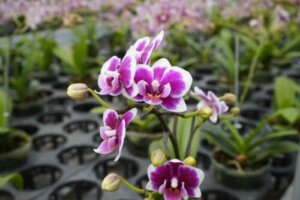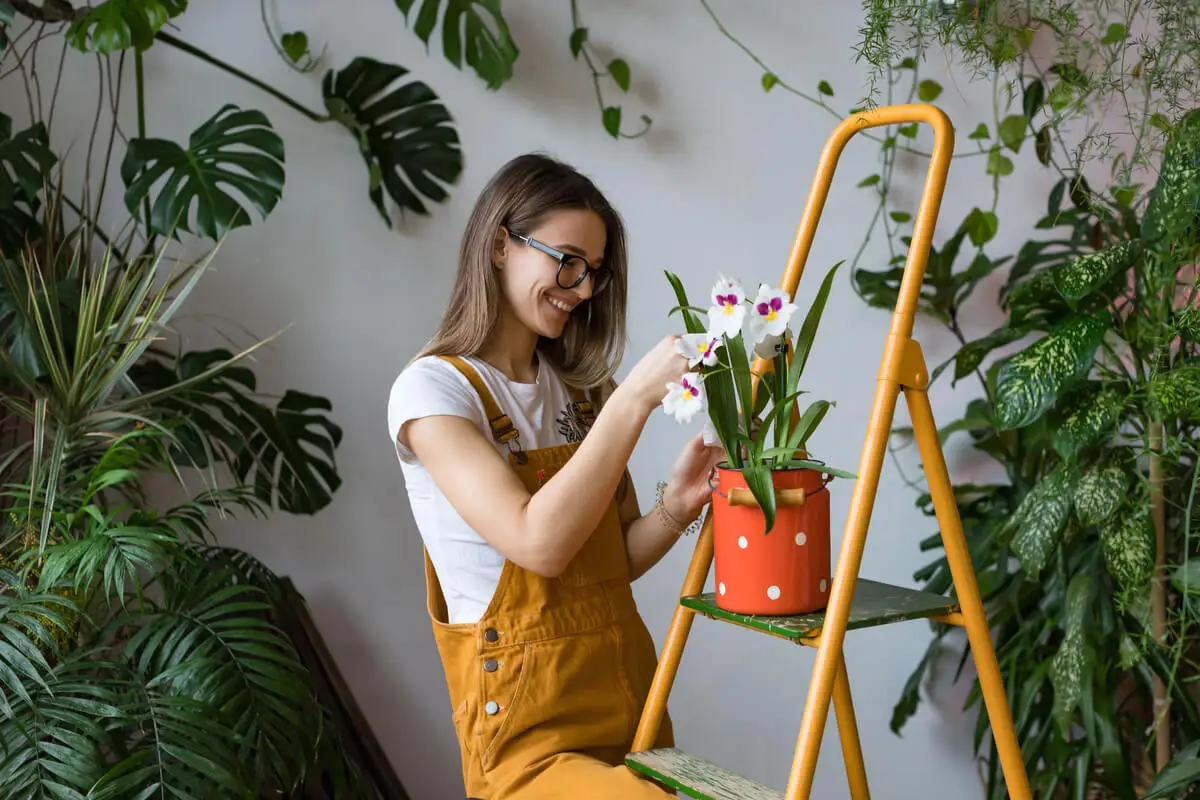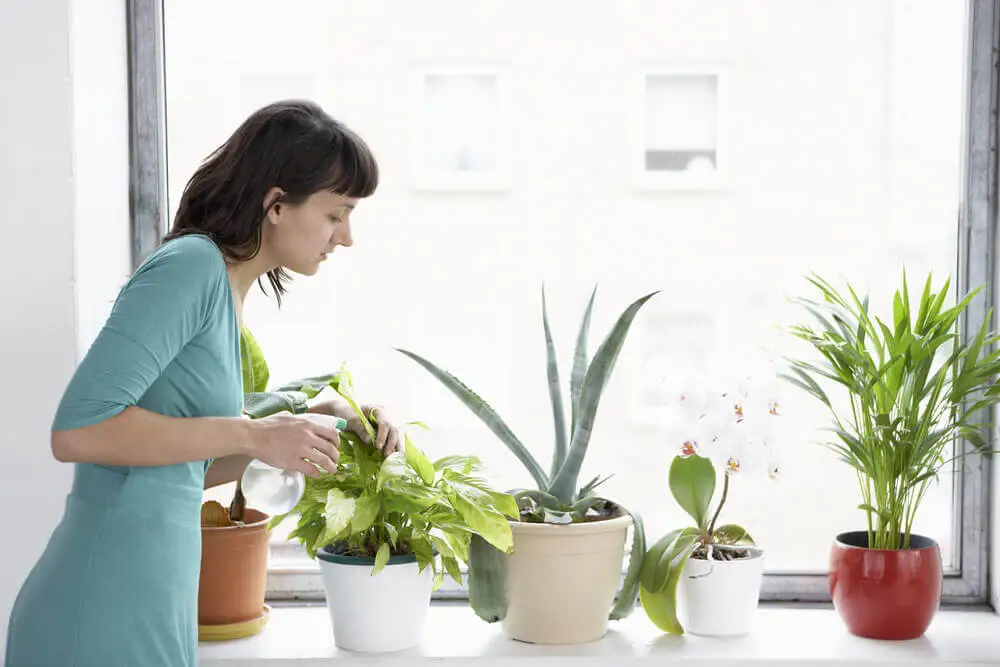Dendrobium Orchids: Cultivation and Care

Orchids have a reputation for being difficult to care for, especially when it comes to their flowers. However, in this article, we’ve decided to talk about Dendrobium orchids, an orchid species that’s quite easy to care for, making it ideal for those who don’t consider themselves experts in gardening.
The goal is to demystify the complexity of orchids and show that they are worth growing. When they bloom, they get all the attention. Within this species alone, there are more than 1,500 varieties that have adapted to the geographical conditions that saw them develop.
We will take a look at their most important characteristics, some of the most common varieties of orchids, and the care they require when growing them.
Types of Dendrobium orchids
This type of orchid belongs to the family of epiphytic plants. This means that they need another plant to grow, such as, for example, trees.
In fact, its name makes it clear. Dendro comes from the Greek for “tree”, while bium refers to life. However, they also grow in the ground and in pots without problems.
They come from Asia and part of Oceania, although they have spread and adapted to climatic and geographical conditions all over the world. Although they prefer warm climates, they can now be successfully grown in non-tropical areas.
With so much variety, it’s not surprising to find a wide diversity, not only in the case of flower colors, but also in the type of flower and parts of the plant on which they grow. It also changes the time of the year when they bloom and how long the bloom lasts.
Dendrobium orchids are classified into 6 groups. The Dendrobium phalaenopsis is the most common. You can find it in any nursery or garden store.
Specimens of this species are evergreen and grow best in warm areas. They bloom in autumn, while in winter the plant seems to go dormant until the spring, when it blooms again.

We think you may also enjoy reading this article: Is It Possible to Change the Color of Flowers? Try this Method at Home
General care for Dendrobium orchids
We’ve already taken a look at their most outstanding characteristics, so now let’s focus on the care required for this beautiful variety of orchids. The first distinction we will make is between the soft cane and the hard cane ones.
The first ones usually remain leafless in the winter and sprout again completely with the arrival of spring. This is not a minor detail, since it’s common to think that the plant has dried up and stop taking care of it.
It hasn’t died; it’s just entered a period of hibernation until the days of low temperatures are over. As for its leaves, they are light green and the plant in general is quite leafy.
With respect to the hard cane orchids, we can say that the main difference is that these do not lose their leaves in winter, they have spiky bulbs and reach a good height. Also, the leaves are dark green.
Watering
The hard cane variety has green leaves all year round, so they require regular watering at any time of the year. It’s important to clarify that regular watering doesn’t imply daily watering. In fact, Dendrobium orchids are not watered every day.
Generally speaking, two times per week would be an adequate frequency. This is because the substrate doesn’t have to be wet all the time. Ideally, it should be watered in the morning with plenty of fresh, salt-free water.
Soft reed orchids need little water during the autumn. However, you must be careful that the pseudobulb on the plant doesn’t wilt.
The importance of not overwatering is that if the root rots, the flowers and leaves will fall off. Then, spots will appear on the stems. This discomfort in the plant is not easy to reverse.
Lighting
As for the light that orchids should receive, hard cane orchids do not need too much, while soft cane orchids demand more. Ideally, they should be placed near a window, but without direct sunlight.
Substrates
Both types of orchids share the same substrates. Keep in mind that the pot should not be too big, as well as not compact the substrate too much.
One of the most common and simple alternatives is to add a special substrate for orchids, which can be purchased at any nursery. It usually contains bark, gravel, and porous material.
Hard cane orchids need a permanent fertilizer in the growing months. They also need this in the winter.
Like this article? You may also like to read: A Care Guide for Vinca to Fill Your Garden with Flowers this Spring
Ambient humidity
On this point, there’s also an overlap between hard-reed orchids and soft-reed orchids. Both need good environmental humidity. In dry periods, you can spray their leaves with a special liquid for orchids.

Temperature
Regarding the ideal room temperature for Dendrobium orchids, there are differences in requirements between hard cane and soft cane orchids. The former needs a temperature ranging from 30 °C to 16 °C.
On the other hand, soft canes need a wide temperature range, especially when flowering is approaching: 30 °C during the day and about 10 °C at night.
Growing orchids
You can make new plants from an orchid that you already have at home. Just keep in mind that it must be at least four years old and in excellent condition.
With a knife, carefully cut the rhizome and the roots that are in it, trying not to damage the root mass. Clean them and cut the dry or brown roots.
Then, place them in a container a little larger than the root set and add a special substrate for orchids. After a couple of days, water the new plant.
It is possible to have Dendrobium orchids at home
Orchids have an unfounded bad reputation. They’re actually an easy species to maintain, as long as you take into account the precautions and tips we’ve talked about here.
We encourage you to have your own Dendrobium orchids. Take good care of them and enjoy them at home!
All cited sources were thoroughly reviewed by our team to ensure their quality, reliability, currency, and validity. The bibliography of this article was considered reliable and of academic or scientific accuracy.
- Díaz Velásquez, J. Y. (2019). Diagnóstico y control in vitro de enfermedades fungosas de orquídeas (Dendrobium sp y Phalaenopsis sp) del vivero de la Universidad Nacional de San Martín–Tarapoto.
- Suárez Guerra, L. (2013). Dendrobium «Bohemia Habana». Nuevo cultivar de orquídea epifita obtenido en Cuba. Cultivos Tropicales, 34(1), 41-41.
- Granados-Sánchez, D., López-Ríos, G. F., Hernández-García, M. Á., & Sánchez-González, A. (2003). Ecología de las plantas epífitas. Revista Chapingo. Serie ciencias forestales y del ambiente, 9(2), 101-111.
- CEJA ROMERO, J. A. C. Q. U. E. L. I. N. E., ESPEJO SERNA, A. D. O. L. F. O., GARCÍA CRUZ, J. A. V. I. E. R., LÓPEZ FERRARI, A. R., MENDOZA RUÍZ, A. N. I. C. E. T. O., & PÉREZ GARCÍA, B. L. A. N. C. A. (2008). Las plantas epífitas, su diversidad e importancia. Ciencias, 91(091).
- García-Franco, J. G., & Toledo, T. (2008). Epífitas vasculares: bromelias y orquídeas. Agroecosistemas cafetaleros de Veracruz. Biodiversidad manejo y conservación [en línea]. México: Instituto de Ecología/Instituto Nacional de Ecología, 69-82.
- Marticorena, A., Alarcón, D., Abello, L., & Atala, C. (2010). Plantas trepadoras, epífitas y parásitas nativas de Chile: guía de campo.
This text is provided for informational purposes only and does not replace consultation with a professional. If in doubt, consult your specialist.








